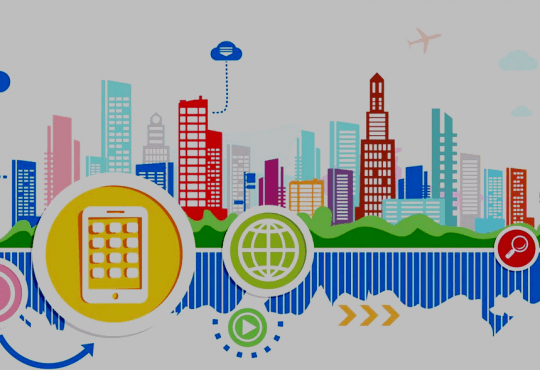SOMSHUBHRO PAL CHOUDHURY, MD, ANALOG DEVICES (INDIA) TALKS ABOUT IMPLEMENTATION OF SMART CITIES IN INDIA

How do you look at the opportunity of 100 Smart Cities for Analog Devices?
While Analog Devices is working in several worldwide Smart City projects in partnership with our customers and partners, in India our focus is on technologies and solutions in the following areas.
• Smart street lighting to reduce energy
While
• Smart security, surveillance and Traffic Monitoring using Smart Cameras
• Smart metering for Energy Metering
• Water and air quality monitoring
Analog Devices participated recently in India’s first Smart City expo in New Delhi in May of 2015 where several solutions on the above were showcased.
How big is the Smart CCTV, Smart Street Lighting& Smart Meters Market in India?
There are three use cases of Smart Lighting– at Homes, Commercial Buildings and Street lighting. For Smart Homes the focus is on automation, where your mobile can turn on/off the lights, do mood lighting and integrate with heating, cooling and security. The energy savings achieved with Smart Lighting from automating the light, particularly if it is a LED light is significantly small, but a nice ‘ease of use’ feature to have for your SmartHome.
In Commercial buildings, lighting is a significant part of the energy usage. Hence automating it via occupancy detection is a big push to save on energy. Secondary advantages are predictive maintenance and ease of use. While occupancy detection with proximity sensors and motion sensors have been used in the past, today we see a lot of movement towards vision based analysis with Smart cameras to detect occupancy and as well as number of people to optimize lighting, heating, and cooling in commercial buildings.
The main driver for city wide Smart Lighting is coming from the fact that CFL Light bulbs are being replaced by LED lights globally. This shift already saves around 40-50% in terms of citywide street lighting bills. Now the discussion is that given the fact that you are doing a truck roll to replace the street lights, you could add another 15-20% of the savings adding a few dollars more per LED light and at the Data Collection unit. Additional benefits of predictive maintenance, reducing energy usage by dimming lights or alternating them, theft detection and even integration with vision based occupancy detection to decide when to on/off the lights would easily reduce the energy usage by an additional 20%. Globally and including India the street lighting tenders are now coming for managed services with an Internet of Things (IoT) server or cloud platform with analytics and alerts.
Smart Metering
Globally Automated Meter Reading has seen significant progress in the last decade. In US, utilities like Pacific Gas and Electricity has put in Smart Meters for majority of their 5M customer footprint. Europe has led in the last few years in terms of rapid deployment with companies like Enel. Currently almost 43% of US household is already covered by Smart metering systems and Europe has set a goal of getting to 80% smart meters by 2020. Prepaid metering initiatives have been done in Europe and parts of South East Asia as well. According to several research reports, the global advanced metering infrastructure market would grow at a CAGR of high single digits in the next 3-5 years.The next phase of big growth will come from China and India. In India there are currently several pilots ongoing for Smart Grid and Automated Meter Reading, with one full scale deployment at Maharashtra State Electricity Board with Zigbee at 2.4 GHz which showed several coverage challenges. Ideally deployments with subGHz wireless networks would be more suited with the concrete construction type used in India.
Smart CCTV
India has several millions of CCTV cameras installed, but most are non-networked or have a low bandwidth interface to the Digital Video Recorder(IDVR). What it means is that most of the video is stored locally and not streamed out to a central network operating or surveillance center to run video analytics on detecting threats, detection violations etc. which is done in many advanced cities like London and Singapore. So what India needs today is how to make these cameras smarter but putg in edge analytics that can detect situations like a scuffle or weapon and send out alerts and an image in a low bandwidth situation. There is an enormous opportunity in terms of enabling these CCTVs with analytics to make them smarter.
Is Rs. 1000 Cr of investment (by centre& state both) per selected city sufficient to build a smart city?
India’s 100 Smart Cities project is one of the most ambitious and potentially game changing projects taken by any Indian government and would probably count in the top 10 worldwide as well. So far, the Central government is planning on spending Rs 1000 crore under two new urban missions over the next five years. While cities have been selected based on a city challenge, the roadmaps are being drawn and plans being discussed, the scope of what constitutes a smart city from an Indian context, is the key. City Challenge concept along with a scoring criterion I believe has created a healthy competition among the cities. The Smart Cities features which are at a very high level today, needs to be detailed further and guidelines established.
As compared to the Smart city initiatives of Singapore and Barcelona, our cities need some basic infrastructure help first. City and urban planning becomes a basic first order necessity. Implementation of security and surveillance, proper garbage collection and disposal, basic maintenance of roads, reducing pollution, stopping wasteful energy and water usage and leakage while managing traffic better are some of the basic requirements of the day. So our goal should be not mimicking what other international cities has done, but a phased approach, solving the basic issues first with technology.
The potential of IoT is huge. How does Analog Devices plan to realize its business benefits?
Analog Devices has been connecting the Physical World to the Digital World for decades with sensors, signal acquisition, signal conversion from analog to digital and digital signal processing. We make sense of the physical world. We make the information relevant. If we look at the Third wave of evoluation with billions of devices connected to the Cloud, it is nothing but sensing the Physical workld and then processing the information eother locally or in the cloud to make decisions. There is hence an immense potential for Analog Devices in the IoT world as we have decades of experience in this.Today, along with our partners we are building the IoT solutions from the Sensors to the Cloud.
What roadblocks/ challenges are being faced for deploying of Smart Meters in the country?
Globally Automated Meter Reading has seen significant progress in the last decade. In US, utilities like Pacific Gas and Electricity has put in Smart Meters for majority of their 5M customer footprint. Europe has led in the last few years in terms of rapid deployment with companies like Enel. Currently almost 43% of US household is already covered by Smart metering systems and Europe has set a goal of getting to 80% smart meters by 2020. Prepaid metering initiatives have been done in Europe and parts of South East Asia as well. According to several research reports, the global advanced metering infrastructure market would grow at a CAGR of high single digits in the next 3-5 years.
How do you see yourself in a few years into the future?
Analog Devices in India have growqn by over 30% in terms of headcount this year and revenue has been growing on an average of 20% in the last couple of years. We are leveraging the enormous talent India has to offer and the capabilities and the skillset of the design house ecosystem.We see immense potential in the new initiatives by the government in Digital India, Smart Cities and Make in India as these mature and take shape from policy to implementation.
What are your target customers/ clients?
Analog Devices has 4 types of customers in India
1. Large MNCs and Design houses that are designing systems in India from their India design centers and by the design houses catering to global MNCs.
2. Larges India OEMs mostly in defense, space and energt markets that do a lot of indigenous designs
3. A large number of small to medium size enterprises majorly in industril, energy markets
4. A growing number of startups in IoT and systems space started by a passionate and enthusiastic young entrepreneurs, with many of them focused not just in the Indian market but globally.
How precisely and easily IoT vicinity will revolutionize the Technological globe?
Concept of Internet of Things based on intelligent and self-configuring nodes interconnected in a dynamic and global network infrastructure is not something totally new as the number of connected devices had already surpassed human population way back in 2011! However, with the integration of Cloud, applications around Internet of Things are emerging truly as disruptive innovation; revolutionizing the way we adopt and use technology to Prevent, Predict and enhance Productivity. This would enable new emerging markets and solutions that would disrupt and eventually displace an earlier technology.
Be it Industrial, Healthcare, Energy, Automotive or Communication applications, IoT attempts to knit technology with people, machines and our environment in a way that it creates a platform to build a truly connected world; that is smart, intelligent and efficient. Most talked about applications that would see tremendous adoption in coming years include Wearable’s, Connected vehicles and Home automation. Wearable’s in particular is transforming itself into a tool to improve personal healthcare and does in essence adopts 3 Ps explained above.
Though evolved independent of each other, integration of Cloud with IoT solves majority of the challenges of the later such as scalability, efficiency, interoperability and more importantly the concern of security at different levels of implementation. Well, any new technology has to go through a ‘healing’ period that would see emergence of standards & protocols, permitting the long list of heterogeneous devices to co-exist and work towards building a truly connected world that is smart, intelligent and efficient.
Globally, implementation of smart grids hasn’t taken off the way it was anticipated. Are cyber security or funding concerns behind it?
There are different aspects to a Smart Grid implementation. SCADA automation has been going on for ages on the transmission side of the network. Distribution grid automation down to the substation level has been done in most countries starting from the high voltage and going down to the low voltage, but it is always about the to what extent you do compared to the investments. As indicated above, automated meter reading has gone on in a rapid pace in the last 5 years especially in US and Europe. Industrial customers have been on Time of Use pricing in many of the advanced geographies. Commercial building also have deployed accurate metering and energy measurement infrastructure to manage their costs. In California today, many have now have signed up for Time of Use Pricing and even turning off their air conditioners at specific times during summer months to get added discounts on the bill. In Germany, all the rooftop solar are fed directly back to the grid with net metering implemented.
What probably has not happened in large scale is the monitoring of the distribution assets like transformers, when they are supposed to fail or due for maintenance.Because of cyber security, the utilities have always used dedicated networks, sometime proprietary protocols, dedicated servers and not cloud severs for any of the deployments. Yes, it has remained a concern and justifiably so, and hence typical IoT use cases of the grid with available and standardized hardware, software and cloud resources has not happened.






